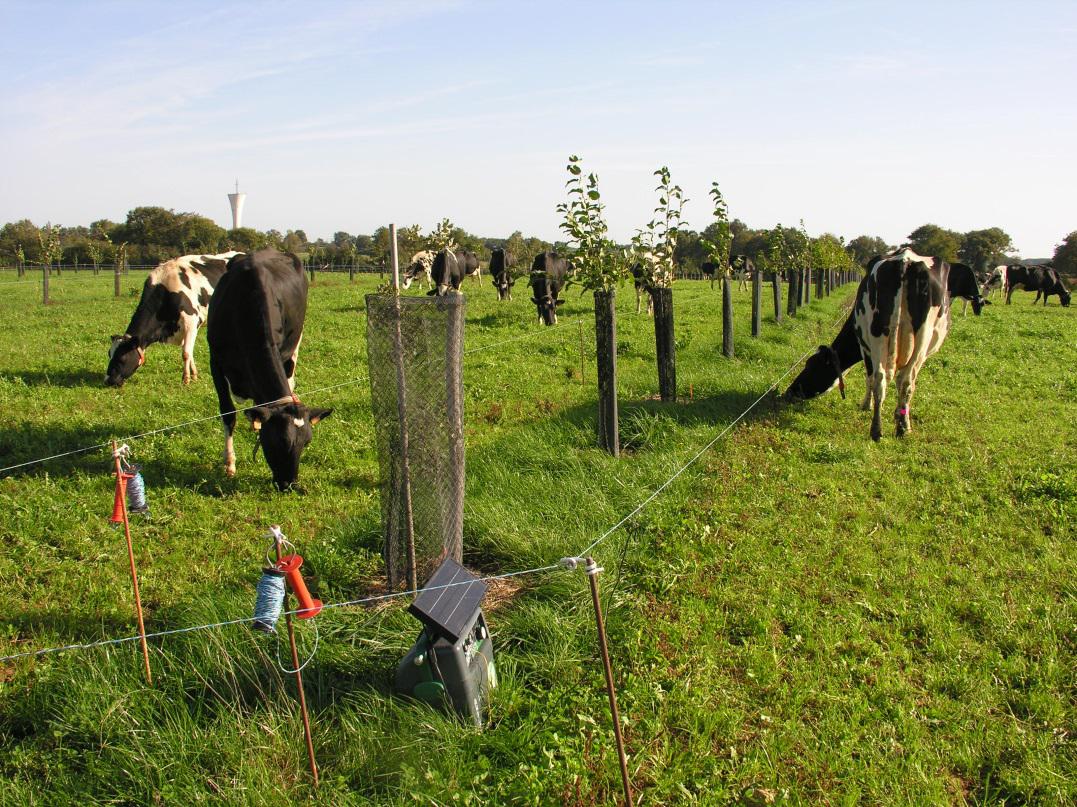
Agroforstwirtschaft mit Wiederkäuern in Frankreich
Beschreibung des Systems
Forschungsanstalten und ausgewählte Landwirte in Frankreich haben die Möglichkeit untersucht Bäume in die Rinder-, Schaf – und Ziegenproduktion zu integrieren.
Erste Stakeholder Treffen
Auf das erste Treffen der Interessenvertreter am 1 Juli 2014 in Nordfrankreich folgte am 28. August 2014 das zweite Treffen am INRA Lusignan Versuchszentrum. Das Treffen wurde von 27 Interessenvertreter besucht. Ein verbessertes Tierwohl und ein verbessertes Image der Landwirte wurden als wichtige positive Aspekte einer Agroforstwirtschaft mit Rindern, Schafen und Ziegen angesehen. Als die wichtigsten negativen Aspekte wurden die Komplexität des Systems und der Arbeitsaufwand wahrgenommen. Mögliche Forschungsgebiete beinhalten Baumschutz versus Nutztiere, die räumliche Anordnung der Bäume zur Optimierung der Futterproduktion und des Tierwohls, der Ernährungsvorteil von Baumfutter sowie der Vergleich von technischen und wirtschaftlichen Beurteilungen solcher Systeme.
Wenn Sie gerne etwas über die Tätigkeiten dieser Gruppe wissen möchten, kontaktieren Sie bitte Eric Pottier (eric.pottier@idele.fr).
Laden Sie den ersten Bericht der Interessensgruppe runter
Laden Sie den ersten Forschungs- und Entwicklungsbericht runter
Laden Sie die Systembeschreibung runter
Im Dezember 2015 wurde ein aktualisierter Systembeschreibungsbericht zur Forschung über die Agroforstwirtschaft mit Wiederkäuern in Frankreich erstellt.
Lessons learnt
In July 2017, Sandra Novak and Eric Pottier summarised the lessons learnt from their research of agroforestry with cattle in France. The research on tree protection at the experimental site at INRA Lusignan showed that electric fencing and metal fences are effective in controlling cattle damage to the trees. However it was also necessary to use strong mesh guards on each individual tree to limit the damage from deer. Planting trees in double or triple rows was more effective (in terms of costs and weed control) than planting single rows. It was also noted that although the trees will provide production benefits in the medium to long-term, the “up-front” costs are significant.
A study of the effect of the young trees on pasture production showed that although grass production was reduced near the trees; the pasture production from the agroforestry and the (no trees) control plots was similar at a plot level. The trees tended to reduce the dominance of clover (Trifolium repens) and increase the dominance of perennial ryegrass (Lolium perenne).
The research also examined the nutritive value of the leaves of 10 tree, shrub or liana species relative to alfalfa. The crude protein concentration varies from less than 85 g kg-1 in holm oak to more than 220 g kg-1 in black locust, chestnut, ash and white mulberry. Both white mulberry (Morus alba) and common ash (Fraxinus excelsior) have sufficient digestibility and nitrogen degradability to be included in the diet of lactating cows in mixed crop-livestock systems.